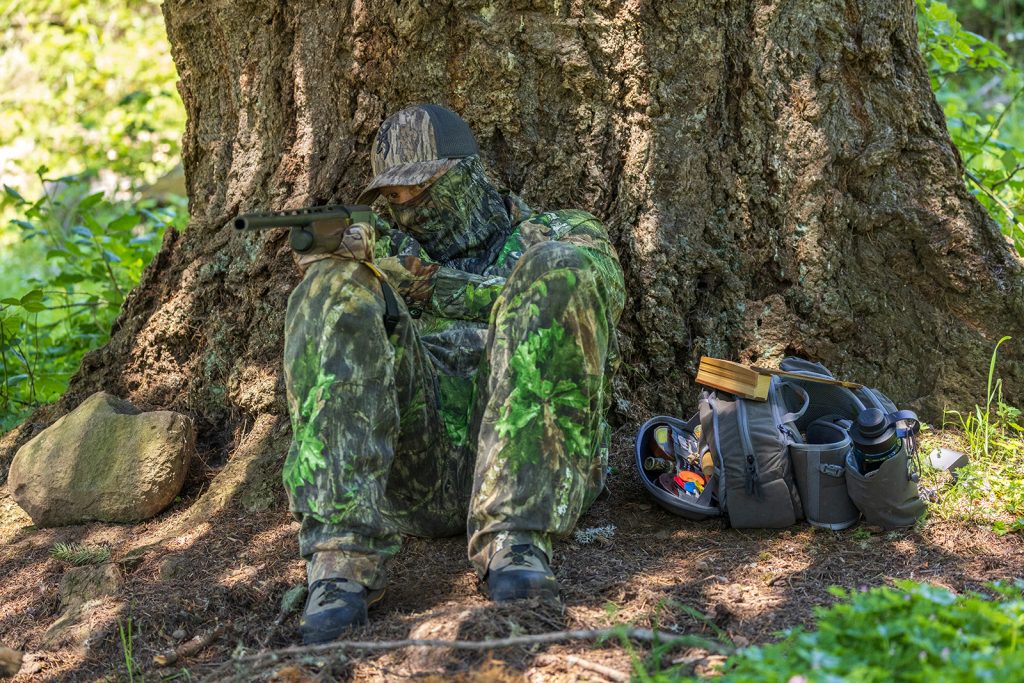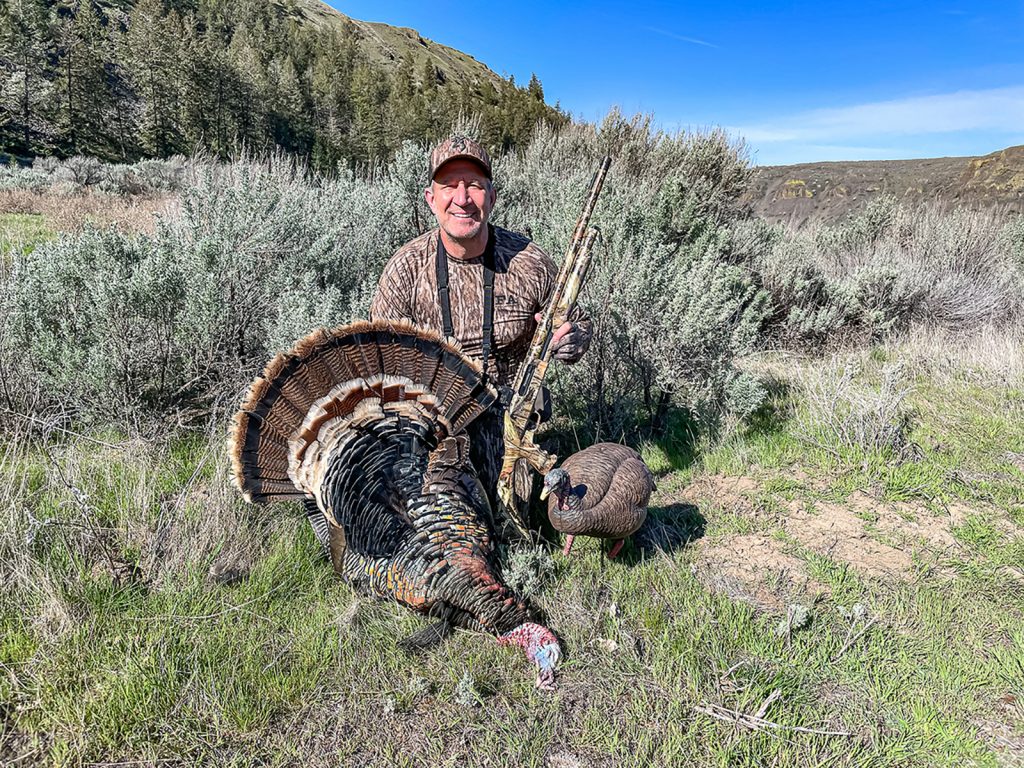Recovery Moves
When your initial plans go awry, there are ways to salvage a hunt.
The hike up the timbered ridge was quicker than anticipated. With 90 minutes until shooting light, the decoy was set. I snugged up against a fir tree, shivering to keep warm. Scouting revealed where turkeys were roosting so I set up just over 100 yards down the ridge.
As daylight flowed through the timber, light tree yelps broke the silence. The birds had moved and were directly overhead. “Great,” I thought, “I’ll call, a tom will fly down to the decoy and I’ll be done.” The birds flew out of sight before touching down. I didn’t hear or see a single gobbler all morning.
That hunt took place 36 years ago, on one of my first turkey hunts. I’ve learned a lot since then. Three springs ago the same scenario played out. This time I didn’t make a sound. The birds pitched from the roost, landed out of sight, and 30 minutes later I began calling. In less than 20 minutes three toms strutted into the decoy, and my hunt was over. When accidentally setting up too close to a roost, refrain from calling until the birds start going about their morning routine. If you botch it, move on.
“When you spook a bird while hunting on open ground, it’s far different than when you’re in a blind,” offers Jody Smith, one of the West’s top turkey guides (jodysmithguideservice.com). Smith guides over 70 turkey hunters a year and has been doing so for nearly 40 years. Each season he takes new hunters, youth, and some of the most accomplished turkey aficionados in the country. He sees and learns a lot.
“If we’re in a pop-up blind and someone makes a noise that spooks a bird, I’ll wait 15 to 20 minutes before calling again,” Smith notes. “Call lightly, and, once a tom answers, get a bit louder. If you’re in their path of travel it might take an hour or more, but that tom will likely come back. But if you called it away from hens or other toms the first time – say from 100 yards away – then spook the bird and it goes back to the others, it’ll be hard to pull that tom back; I usually move to another spot when this happens.”


Last season Smith had three delayed doubles, where two hunters in a blind shot their birds more than two hours apart.
“If scouting shows multiple toms in an area, and you shoot one right away, stay put,” Smith advises. “Grab that bird, let things settled down, and 30 to 45 minutes later, call again. It might take a few hours, but often other toms in the area will respond.”
Smith continues, “When you’re in a blind and make a noise, the birds don’t know what it is, but if you’re sitting against a tree with no cover and a tom sees your face or hands move when calling, stop and relocate or come back for that bird a couple days later. When you return, use a different call. If you first called it in with a box call, switch to a diaphragm or slate call. I might be overthinking it, but it seems educated toms respond more readily to new sounds.”
Years ago I was bowhunting from a pop-up blind. A tom unexpectedly approached from behind. It gobbled and strutted right next to the blind, even brushed against it, but it wouldn’t go to the decoy. I quit calling. After 15 minutes the tom walked away in the same direction it came in. Thirty minutes later it had moved to the side of the blind and was eating grass. I switched calls and the tom came strutting in. I shot it inside 10 yards.
Last season Smith had clients miss 39 shots at turkeys.
“When this happens and it’s the only bird I’m seeing while scouting, I let the tom get out of sight, then we leave. I’ve never called one back in on the same morning it had been shot at. But if there are multiple toms, give it an hour or more and you might get another bird to respond.”
If a tom is coming in but spooks when it sees a decoy, aggressively call one time in hopes of turning it. If it doesn’t respond, move a short distance and call 20 or 30 minutes later. Use a different call and stash the decoy. Sometimes keeping a tom searching for a new hen will be its downfall.

The turning point in becoming an accomplished turkey hunter is realized when you learn from mistakes, make wise adjustments, and success outweighs the mishaps.
Note: For signed copies of Scott Haugen’s popular book, Western Turkey Hunting: Strategies For All Levels, visit www.scotthaugen.com.
